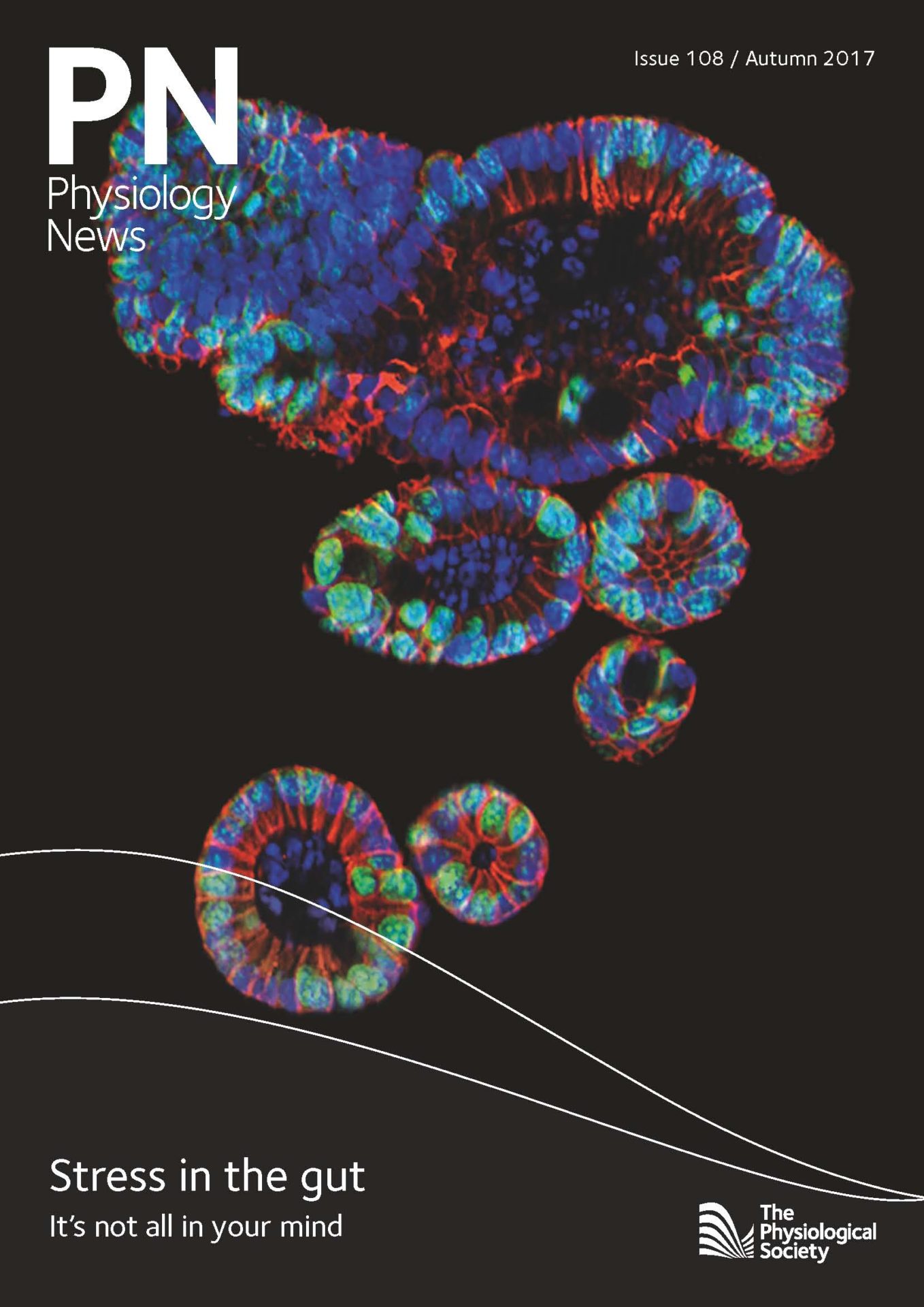
Physiology News Magazine
Editorial
News and Views
Editorial
News and Views
Karen Doyle
Lecturer, Department of Physiology, NUI Galway
https://doi.org/10.36866/pn.108.5
Once again, Roger has passed the baton to me to guest edit the Autumn edition of Physiology News. In this edition, we have four feature articles that touch on The Physiological Society’s theme for 2017, ‘Making Sense of Stress’.
David Finn talks about how stress can profoundly affect perception of pain, variously producing analgesia or exacerbation of pain under different circumstances. Lin-Hua Jiang’s article highlights the role of the TRPM2 channel in oxidative stress and its possible involvement in an array of diseases ranging from diabetes to acute brain injury and chronic neurodegenerative conditions. Mark Burnley tells us about the acute and chronic responses to muscular stress during exercise – how it tries to break us, ultimately shapes us, and the sad truth of ‘use it or lose it’. Kim Barrett explains the impact of stress on the friendly bacteria in the gut. She also discusses the role that the microbiota may play in maintaining a healthy brain, and in the onset and progression of brain disorders – psychiatric and neurological. In this article, we also learn about faecal microbial transplant therapy, which can be very effective in treating severe and persistent diarrhoea. It may also prove beneficial for chronic diseases such as irritable bowel syndrome. Apparently, there are do-it-yourself instructions on-line, although Kim cautions that further clinical trials are needed!
Questionable online sources of information is a strong theme in this issue. We have a commentary from Gladys Onambele-Pearson and Kostas Tsintzas on the ‘alternative truths’ published by self-styled gurus on social media, espousing all things human exercise physiology and nutrition. Physiologists can be a shy bunch, but perhaps we should step up and become the real gurus on social media. We probably should put ourselves out there to combat the ‘fake news’ as Donald Trump would describe it. There is clearly a huge appetite from the general public for information on human physiology, but we may need to brush up on our scientific communication skills to ‘guru’ effectively.
In this issue, we also have a feature article from Vivien Rolfe on open education, discussing widening access to educational materials in the life sciences, and in particular, open practice for laboratory practical teaching. We also learn what a Wikimedian is, in an interview with Andy Mabbett, our Wikimedian in residence. Andy talks about the Wikimedia community and their ethos of free access to all knowledge for everyone. With the explosion of information available online, the Wikimedia movement relies on the contribution of experts for accuracy and maximum impact.
Roger Thomas has provided a report on The Physiological Society’s AGM recently held in London, in his own inimitable style, telling us about the purple chairs as well as other notable details from the reports from The Society’s President and Officers. He also mentioned that the inaugural plenary speaker (Eric Olson) was firmly of the view that muscle is the most important tissue in the body, a sentiment no doubt shared by many, but I think I am still team brain!
Our front and back cover show stunning gut-related images. On the front, we have mouse intestinal stem-cell-containing organoids, courtesy of Ben Mellows, a PhD student at the University of Reading, and on the back cover we have a beautiful image of gut bacteria grown in culture from Nicola Fawcett and Chris Wood.
As with last year, if you spot any mistakes, please send your letter of complaint to Roger.
